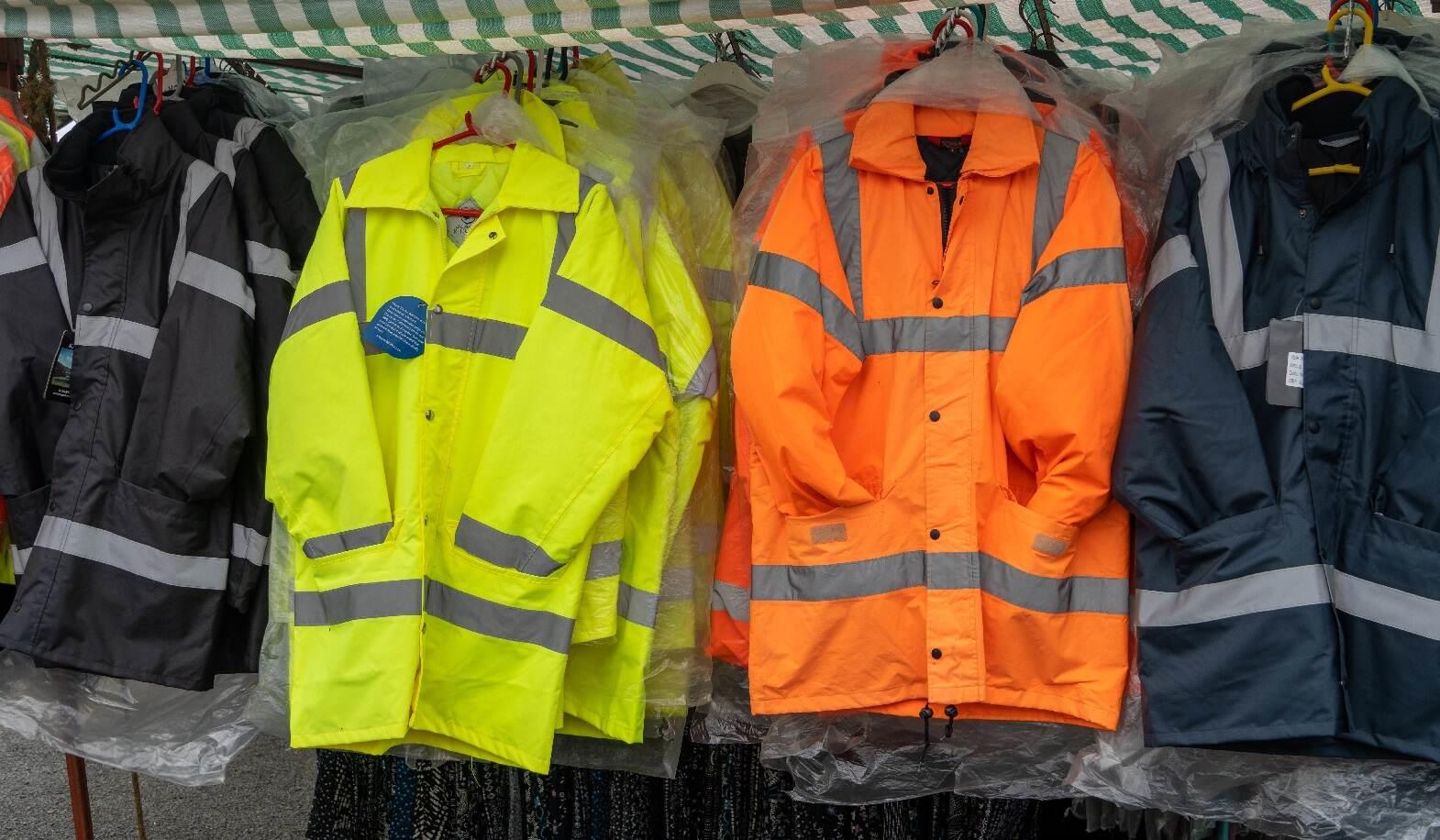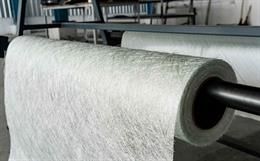Humans have been mimicking these adaptations for thousands of years, and the textile and fabric industries are no different. As ancient Roman philosopher Seneca the Younger said, all art is an imitation of nature. Even the most basic felted textiles take their cues from the fur of the animals they are made from. When it comes to biomimicry in textiles, there is an entire planet to explore. For instance, velcro and other hook-and-loop closures were famously inspired by the burrs that got stuck to George de Mestral’s trousers during a hike. These innovations did not stop in the 1940s, though. Here are a few of the newest innovations in protective textiles that are inspired by nature.
Tensile Strength: Inspired by Spiders
Spider silk is one of the strongest natural fibres in the world, so it should not come as a surprise that humans have taken inspiration from it to create textiles with amazing tensile strength. It is quite possible that the first fishing nets were inspired by the shape of spider webs. Now that humanity can study it at the molecular level, scientists know exactly what lends spider silk its strength and can take inspiration from that. The proteins that make up spider silk are called spidroins, and materials scientists have engineered numerous artificial versions of them. One of these artificial fibres, inspired by the silk of the Darwin bark spider, is formed from a gelatinous substance (like real spider silk) and offers a tensile strength of 630 MPa and a toughness of 130 MJ/m.2 This artificial polymeric fibre will have a huge variety of applications in heavy industry and in medicine alike.
These materials are not only renowned for their strength and toughness. Real and artificial spider silk also display a host of other properties, such as supercontraction and high thermal conductivity that make them great for creating protective textiles. This enables these naturally inspired textiles to be used in muscle and ligament replacements, heat sinks, parachutes and even bulletproof vests.
Durability and Cut Protection: Inspired by Fish, Crocodiles, Alligators, Geckos and Mushrooms
Many species of fish have hard scales that protect them from the elements and from parasites. These are undoubtedly beautiful, and many designers have taken their aesthetic inspiration from fish scales. But a team of materials scientists in Canada have been inspired in a very different manner. At McGill University in Montreal, a research group led by Francois Barthelat studied more than dozens of species of fish before settling on the alligator gar, a freshwater fish native to North America. Barthelat’s team found that alligator gar scales overlapped perfectly for their purposes. In addition, fish scales are the toughest collagen material known to humanity. Over several years, the team developed a protective fabric that utilises a microscopic ceramic coating to create 3D printed armour gloves that can resist cuts and piercing.
Fish are not the only animals that have natural armour. Alligators and crocodiles have phenomenally tough skin that enables them to hold their own against their prey, as well as other predators. It is no surprise that crocodile and alligator leather is prized in many luxury clothing items, including shoes and belts. In 2023, a research team in China announced that they had developed a new textile inspired by the strength of crocodile skin. This soft-rigid unified structure mixes a soft textile substrate with rigid blocks and epoxy resin, resulting in a textile that resists abrasion, cuts and punctures.
Meanwhile, a 2021 study published in the Autex Research Journal takes a different approach to biomimetics in cut-resistant textiles. Most of the cut-resistant fabrics on the market are either imbued with p-aramid yarns or core-spun around stainless steel. This leads to the problem of grip strength, meaning that they have to be further coated with rubber or a similar non-slip material. Instead, this study tested a polymeric paste on four different types of material, examining different types of coating with each material, and found that biomimetic grip dots loosely inspired by gecko toes had the best combination of comfort and grip strength.
Increasing the durability of fabrics is key to circularising the textile economy. Waste reduction is one of the most important goals here. The natural strength of the tissue that makes up mushrooms’ root systems (also called mycelium) has made fungi a great place to look, and many designers including Stella McCartney have turned to mushroom leather as a vegan, sustainable alternative to real and artificial leather. Even better, the mycelium can be coated with chitin (inspired by the shells of crabs) to add even greater durability. One idea that people have explored in this regard is using mushroom leather to make children’s shoes. Children need durable footwear, and mycelium allows these shoes to be strong, thick, and completely biodegradable.
Waterproofing and Weather Protection: Inspired by Trees, Lotus Flowers, Ducks and Pinecones
Water may be one of the keys to life, but water getting into places it should not go can be disastrous. Humans have been creating waterproof fabric for thousands of years, with indigenous South Americans applying natural rubber latex to their garments. However, rubber stiffens in the cold and gets sticky in high heat, and it is not very breathable: far from ideal for many garments. In recent years, scientists have continued to take their inspiration from nature to create new types of textiles that repel water or allow it to evaporate in seconds.
Nanotechnology opens up a host of new avenues when it comes to creating water protective textiles. For instance, people have long noted the water repellence of the carnauba palm tree (a native of Brazil). The carnauba’s leaves produce a natural waxy substance that has been utilised in a huge selection of products. In 2020, a research team published findings in The Journal of the Textile Institute detailing their use of chitosan to create a water repellent nano-coating inspired by carnauba palms. This coating works on nylon, cotton and nylon/cotton blends, and it remains hydrophobic for more than thirty seconds after being exposed to water. Moreover, it persists after being washed and it is fully air permeable. Even better, the chitosan meant that the treated fabrics had the bonus of being antibacterial against E. coli and S. aureus.
Aquatic plants need to be able to handle life under the water, and many of them are hydrophobic as a result. The lotus is one of these: its leaves have a microscopically rough texture, trapping tiny air bubbles and making them superhydrophobic and allowing the flower to float on the surface. That is why textiles scientists have been taking their cues from the lotus leaf for at least a decade, forming microscopic silver nanoparticles on cotton fabric. The resultant textile is not only hydrophobic, but it also resists damage from ultraviolet light and inhibits the growth of bacteria thanks to its high silver content.
There is another exciting recent advancement in the field of water-resistant textiles, which shows great promise not only for waterproofing, but for separating oil and water. Inspired by the hydrophobic coating on the feathers of ducks, this coating uses nano-titanium nitride (TiN), hydroxyl-terminated polydimethylsiloxane (HPDMS) and tetraethyl orthosilicate (TEOS) in a one-pot process. The nanocoating resists abrasion, and exposure to light restores its superhydrophobicity. This cotton-based textile is 98 per cent effective at separating oil from water, and it retains this ability with multiple uses, so it shows great promise for use in cleaning oil spills and filtering oil at refineries.3
Meanwhile, many species of pine tree create pinecones that dynamically open and close their seeds based on ambient moisture and temperature. The cones of lodgepole pines, for instance, only release their seeds after being exposed to fire, ensuring that the new trees have plenty of room to grow. In 2020, a group of scientists in the United Kingdom developed textiles inspired by pinecones’ natural adjustments to temperature. One of their prototypes increases its permeability to airflow in damp conditions and reduces it by up to 30 per cent in dry ones, the opposite of what many smart textiles do.4 Their other prototype is a fibre that reduces its length by 40 per cent in damp conditions, using hygronastic movement to adjust to changing humidity.
Ultraviolet and Sun Protection: Inspired by Full Sun Plants
The sun may be what makes life on Earth work, but for centuries, people have needed to protect themselves from its ultraviolet radiation. Many animals have fur, scales or feathers that serve this purpose, but humans do not. Sunburns can be incredibly painful and dramatically increase a person’s risk of developing skin cancer, so innovations in UV protective textiles have long been a priority in the industry. Traditionally, these fabrics are tightly woven to prevent ultraviolet infiltration or coated in chemicals that absorb or reflect the radiation. However, these chemicals tend to wash away or break down after two or three years of use, and the specialty weave that helps clothing block ultraviolet light makes a thick, non-breathable fabric. This is far from ideal for people who spend a lot of time in the sun.
Meanwhile, the entire plant kingdom requires this same ultraviolet radiation for survival. Some plants, such as tea and coffee, generally require at least twelve hours of sunlight per day as they grow. Chemists have examined this phenomenon and found that many of the compounds that help these plants make great use of sunlight also help absorb ultraviolet radiation, providing effective protection to the fabrics it is applied to and the person who wears them. The phenols in green and black tea extracts provide one of these forms of protection. Likewise, Betel leaf, prickly chaff flower and camel thorn bush produce copious amounts of UV-absorbent enzymes. These are easier to come across in many places, and they are far kinder to the environment than a titanium dioxide coating is.
Heat, Flame and Cold Resistance: Inspired by Polar Bears and Saharan Silver Ants
Firefighters are among the most important users of protective textiles. Their turnout gear needs to be extremely flame resistant, yet lightweight and easy to put on. For this reason, they are always on the lookout for new materials. Thankfully, the industry has come a long way from using asbestos fibres for this purpose. There are a number of protective textiles on the horizon inspired by naturally fire-resistant plants like the ponderosa pine and even certain cultivars of cotton. A United States Department of Agriculture (USDA) team based in New Orleans recently made a breakthrough in this regard. Last year, they were able to interbreed two lines of genetically engineered cotton, providing superior fire protection to either of the parent cultivars. This also allows them to avoid using harsh chemicals. This development will improve protective gear for firefighters, and it can also create soft, fully organic sleepwear for children in countries that require such clothing to be flame-retardant. This also negates the need to infuse such fabrics with formaldehyde.
One of the most surprisingly heat resistant animals on the planet is the Saharan silver ant, which lives in northern Africa and is routinely active in temperatures above 47o C (a temperature that kills most other insects in seconds). The ants manage this through passive radiative cooling thanks to the silver triangular hairs that grow across their bodies. The hairs dissipate the heat from solar radiation and reflect near-infrared radiation, in large part due to the minuscule air gaps created by the hairs (often just a few hundred nanometres thick). There have been several studies on coating textiles with zinc oxide micro-crystal-bar composite to mimic this effect. These coatings have more than 95 per cent reflectivity, which can reduce a textile’s surface temperature by up to 17.7 per cent.5 In addition to its utility in textiles, this coating is now commonly used on solar panels, enabling the panels to be made larger without overheating.
Antarctica and the high Arctic may be frigid, but they are far from desolate. At both poles, plants and animals have evolved to deal with the cold temperatures and extended darkness. One of the most iconic Arctic animals is the polar bear. Polar bears have black skin and hollow, translucent fur that enables them to stay warm even in temperatures as low as -45o C. Earlier this year, a research team at the University of Massachusetts Amherst took its inspiration from the world’s largest bear to create an innovative textile that is far more thermally efficient than cotton while being thirty per cent lighter. It is made from nylon coated with a material they call PEDOT. As long as the wearer has access to light (either sunlight or artificial lighting), they can maintain their personal climate at colder temperatures without needing to use energy on extra heating. Smart textile producer Soliyarn has already begun to create cloth with this new material.
One of the most common utilities of textiles when it comes to temperature resistance is in insulation. Since most of the world has abandoned the concept of using asbestos fibres, modern home insulation is generally made from fibreglass, mineral wool and cellulose. Polar bear fur has been a great inspiration on this front as well, as its thermal properties are effective against both extreme cold and extreme heat. In 2021, one group developed a polymer nanofibre based on polar bear fur. It is designed for selective reflectivity, focusing on infrared radiation. This allows it to provide enhanced passive radiative cooling in the summer and keep heat indoors more effectively in the winter. As climate change continues to worsen, these developments are becoming increasingly necessary (and they can greatly reduce humanity’s reliance on climate control as well).
Luminescence, Colour, Camouflage and Increased Visibility: Inspired by Fireflies, Butterflies, Beetles, Birds and Cephalopods
A commonly neglected aspect in the field of protected textiles is the fabrics that prevent major injuries due to human Construction and airline workers commonly wear high-visibility reflective jackets at work, and people who spend significant time on roads at night can greatly benefit from this protection as well.
Fireflies that give light to summer nights and anglerfish that lure small animals to their lairs have something in common. Bioluminescence has long fascinated humans, and it has inspired some textile scientists to create fabrics with the principle in mind. In 2020, Dr. Sweta Iyer at the University of Boras published her doctoral thesis on the concept of using bioluminescence in textiles. This would be far more resource efficient than many current high-visibility textiles, and it may not require a power source for many uses. And thanks to this clever design, the light does not also generate heat.
Many animals that appear brightly coloured have little or no pigment. Blue morpho butterflies, tiger beetles and blue jays are strong examples of this principle. Although each species appears brightly coloured to the human eye, a microscopic view reveals that the colour comes from the microscopic scales on their wings or feathers. These scales are fine enough to reflect only certain wavelengths of light, giving them an iridescent appearance. A company called Amphico has taken advantage of this same principle to make textiles that are highly visible and brightly coloured while using up to 80 per cent less water and far fewer dyes than other methods.6 These materials are even biodegradable, further reducing their environmental footprint.
Camouflage is an incredibly common element in plants and animals alike, and the concept has long been a critical element of military and hunting textiles. For centuries, people have been integrating the colours and textures of their environment into textiles, but innovations in nanotechnology have allowed materials scientists to take inspiration from nature on the microscopic level. Soft-bodied cephalopods such as cuttlefish and squid are famous for their ability to change colour in a fraction of a second. A group of scientists at Harvard University have used this concept to create a soft, textile-based machine that utilises networks of microfluids to actively change its colour. This allows the machine to precisely match its environment, not only for visible light but for infrared radiation. The technology has not yet been adapted for garments, but it shows great promise for field shelters and other similar items.
Artificial Textiles: Natural Inspiration
Whether these materials take their inspiration from materials, construction or chemistry, the textile industry owes a great debt to the natural world. As with many topics, biology is a fractal concept: the deeper a person delves into it, the more they discover its vastness and complexity. There is a saying that “everything old is new again”, and species of plants, animals and fungi that came into existence millions of years before humans did are perhaps the best example of the principle.
Planet Earth holds millions and millions of wonders, and humanity stands to learn from every one of these. Many of the things that people call innovative have already existed for millennia; it is only humanity’s knowledge of the concepts that is new. Just as the mould that forms penicillin had existed long before Doctor Alexander Fleming discovered its utility, spider silk, polar bear fur and butterfly wings have been around at least as long as people have. The more deeply humanity connects with the natural world, the greater our ability to take advantage of these principles. Imagine what materials scientists will be able to do with fifty or one hundred further years of technological advancements. In the end, the best way for humanity to move forward is to connect with its natural roots.
- https://journals.plos.org/plosbiology/article?id=10.1371/journal.pbio.1001127
- https://onlinelibrary.wiley.com/doi/full/10.1002/smm2.1189
- https://pubs.acs.org/doi/10.1021/acsanm.3c01763
- https://www.mdpi.com/2313-7673/5/4/52
- https://www.sciencedirect.com/science/article/abs/pii/S245221392100190X
- https://asknature.org/innovation/colorful-waterproof-textiles-inspired-by-arthropods/








